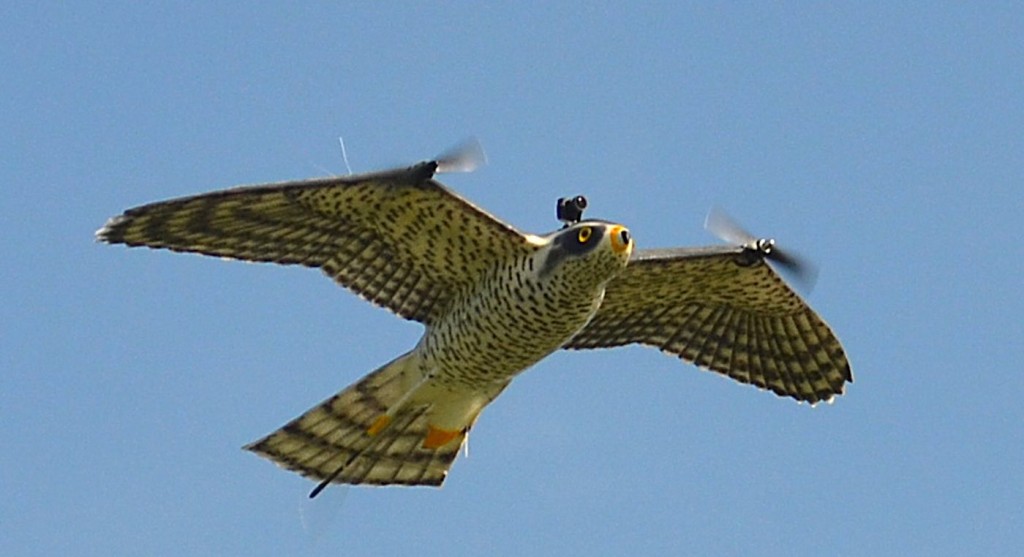
Remember the ‘Miracle on the Hudson’, when Captain “Sully” Sullenberger’s jet flew into a flock of geese and lost both engines, shortly after take-off in New York City?
That was 13 years ago, but now researchers have designed a way to get flocks of birds to disperse using a cleverly-disguised drone.
Besides the safety factors, collisions between birds and airplanes cost the aviation industry more than a billion dollars annually from damaged aircrafts, delays, and flight cancellation worldwide.
A team partnering with the University of Groningen in the Netherlands decided to tackle the problem by developing an artificial raptor, inspired specifically by the fastest bird on earth—the peregrine falcon.
Made from fiberglass and polypropylene, and reinforced with carbon fiber, the fake predator is controlled from the ground and can beam back live pictures of its flight.
Field testing in the Netherlands showed that all flocks were successfully deterred by the RobotFalcon within five minutes after it launched in flight, with half of them resulting in fields being free of birds within 70 seconds.

The fake falcon was also found to be so realistic, that birds were still being scared away after three months.
RELATED: Falcons Soar Off Endangered List With Irony, From Nests in City Skyscrapers
“We developed the RobotFalcon and tested its effectiveness to deter flocks of corvids, gulls, starlings and lapwings,” the group reported in a study published in The Royal Society Interface journal.
“In this field study, we tested the effectiveness of the RobotFalcon to drive away bird flocks by measuring the proportion of flocks it drove away, how fast fields were cleared from flocks, how long it took for them to return, and whether habituation occurred.
The test flights were flown in an agricultural environment around the Dutch city of Workum.
“The behavior of the bird flocks was studied upon exposure to the RobotFalcon, to a normal drone, and in control trials without any disturbance.
LOOK: Border Collies Help Reduce E. Coli on Beaches by Chasing Away Booming Gull Populations
“We further compared the effectiveness of the RobotFalcon with the conventional methods in current use at a military airport such as distress calls and pyrotechnics.
“The RobotFalcon scared away bird flocks from fields immediately, and these fields subsequently remained free of bird flocks for hours.
It outperformed the drone and the best conventional method at the airbase—distress calls. Most importantly, there was no evidence that bird flocks became accustomed to the RobotFalcon over the course of their fieldwork.
The group calls the lifelike device “a practical and ethical solution to drive away bird flocks with all advantages of live predators but without their limitations.”
WATCH For Fun: Footage Captures the Moment a Skydiver Leaps From Plane Sitting in an Inflatable Water Raft
The novel method can make a contribution to the problem, but has its limitations. Flights cannot take place during strong wind conditions. Also, the bird was not as effective when it came to deterring large birds, like geese or herons, and a bigger robot resembling a bird such as an eagle may could be developed for that purpose.
No word yet on scaling up manufacturing of the problem-solving peregrine.
FLY This Innovation to Flight-Happy Friends on Social Media…




















